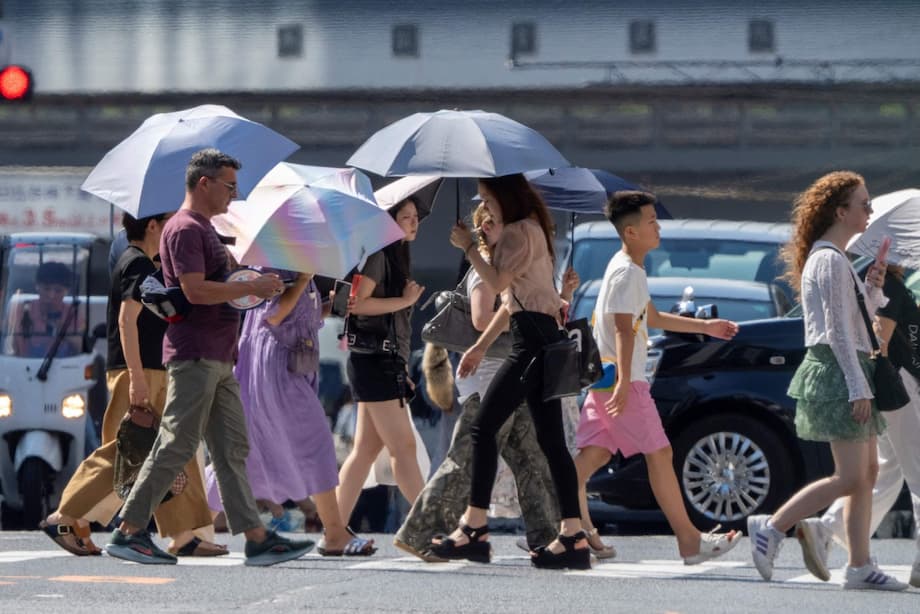Japan’s Remarkable Longevity: Four Decades at the Top
For the 40th consecutive year, Japanese women have claimed the world’s highest average life expectancy, according to Japan’s Ministry of Health, Labour and Welfare. In 2024, the average lifespan for Japanese women reached 87.13 years, maintaining their global lead among countries that publish comparable data. Japanese men, meanwhile, posted an average life expectancy of 81.09 years, ranking sixth worldwide. These figures are not just statistical curiosities—they reflect deep-seated trends in Japanese society, healthcare, and culture, and they raise important questions about the future of aging populations everywhere.
- Japan’s Remarkable Longevity: Four Decades at the Top
- How Does Japan Compare Globally?
- Why Do Japanese People Live So Long?
- The Impact of COVID-19: A Temporary Setback
- Japan’s Aging Society: Opportunities and Challenges
- Healthy Life Expectancy: Not Just Living Longer, But Living Better
- Centenarians and the “Blue Zones”: Fact or Fiction?
- Lessons for the World: Can Japan’s Success Be Replicated?
- In Summary
Japan’s achievement is all the more striking given the global context. While many developed nations have seen life expectancy plateau or even decline in recent years—often due to the COVID-19 pandemic and related health crises—Japan’s numbers have remained remarkably resilient. But what lies behind these impressive statistics? And are there challenges or controversies lurking beneath the surface?
How Does Japan Compare Globally?
Japan’s life expectancy is not just high by historical standards—it is exceptional even among the world’s wealthiest nations. According to The Japan Times and global databases, Japanese women’s life expectancy outpaces that of women in Switzerland, South Korea, Spain, and France. Japanese men, while not at the very top, still rank among the world’s healthiest, trailing only behind men in Sweden, Switzerland, Norway, Italy, and Spain.
For context, the United States—a country with far higher per-capita healthcare spending—has seen its life expectancy fall to 77.5 years in 2024, down from 79 years in 2019. This places the U.S. well below the average of comparable wealthy nations, which sits at around 82.5 years. The gap is even more pronounced when comparing women’s life expectancy, where the U.S. ranks lowest among its peers.
Japan’s demographic profile is also unique. In 2024, the country’s total population was estimated at 123.89 million, with nearly 30% aged 65 or older—the highest proportion of elderly citizens in the world. This aging trend is both a testament to Japan’s success in extending life and a looming challenge for its social and economic systems.
What Do the Numbers Really Mean?
Life expectancy at birth is a statistical measure that estimates how long a newborn can expect to live, assuming current mortality rates remain unchanged. It is not a prediction for any individual, but rather a snapshot of a population’s health and longevity at a given time. In Japan, these numbers have risen steadily since the postwar era: in 1947, women could expect to live just 53.96 years, and men 50.06 years. Today’s figures represent a dramatic improvement in public health, nutrition, and medical care.
However, it’s important to distinguish between total life expectancy and “healthy life expectancy”—the number of years people can expect to live in good health, free from significant disability or chronic illness. In 2022, healthy life expectancy in Japan was 75.45 years for women and 72.57 years for men, meaning that the average Japanese woman spends about 11.6 years and the average man about 8.5 years in less-than-optimal health at the end of life.
Why Do Japanese People Live So Long?
Experts point to a combination of factors that contribute to Japan’s remarkable longevity:
- Diet: The traditional Japanese diet is rich in fish, vegetables, rice, and fermented foods, and low in saturated fats. Smaller portion sizes and an emphasis on fresh, seasonal ingredients are believed to reduce the risk of obesity and chronic diseases.
- Healthcare System: Japan’s universal healthcare system ensures that nearly all citizens have access to preventive care, screenings, and early treatment for illnesses. High vaccination rates and regular checkups are the norm.
- Social Cohesion: Japanese society places a strong emphasis on community, family, and respect for elders. Social isolation, a risk factor for early mortality, is less common than in many Western countries.
- Active Lifestyles: Many Japanese people remain physically active well into old age, whether through walking, gardening, or traditional exercises like radio calisthenics.
- Low Smoking Rates: While smoking was once widespread, tobacco use has declined sharply since the 1970s, thanks to public health campaigns and stricter regulations.
These factors are supported by research from sources like Fortune and The Planet D, which highlight Japan’s healthy diet, active aging, and strong social networks as key contributors to its world-leading life expectancy.
Leading Causes of Death: The Role of Disease and Aging
Despite advances in medicine, cancer remains the leading cause of death in Japan for both men and women. According to the health ministry, 25.59% of men born in 2024 are projected to die from cancer, while 20.75% of women are expected to die of old age—slightly more than from cancer (19.06%). If cancer deaths could be eliminated, life expectancy would rise by 3.11 years for men and 2.68 years for women.
Other major causes of death include heart disease and stroke, but deaths from heart illnesses have declined in recent years, contributing to the stabilization of life expectancy figures after the disruptions of the COVID-19 pandemic.
The Impact of COVID-19: A Temporary Setback
Japan’s life expectancy dipped in 2021 and 2022, primarily due to increased mortality from COVID-19. However, 2023 marked the first year since the pandemic began that average lifespans for both men and women rebounded, as deaths from the virus declined. This resilience highlights the effectiveness of Japan’s public health measures and the adaptability of its healthcare system.
Still, the pandemic left its mark. Healthy life expectancy—years lived in good health—also declined slightly, particularly for men, reflecting the broader impact of the crisis on chronic disease management and mental health.
Japan’s Aging Society: Opportunities and Challenges
Japan’s high life expectancy is both a triumph and a challenge. With nearly a third of its population aged 65 or older, the country faces unprecedented demographic pressures. The shrinking workforce and rising number of retirees strain pension systems, healthcare resources, and social services.
To address these challenges, the Japanese government has implemented policies to encourage older adults to remain in the workforce longer. The retirement age has been raised, and companies are encouraged to offer flexible employment options for seniors. At the same time, there is growing concern about the sustainability of social support systems and the need for innovations in elder care.
Population Decline and Its Consequences
Japan’s population is not only aging—it is shrinking. The total population has declined steadily since 2010, with projections showing a continued decrease through 2030 and beyond. This trend is driven by a persistently low fertility rate and limited immigration. As the postwar baby boom generation enters old age, the proportion of elderly citizens will continue to rise, further intensifying the challenges of supporting an aging society.
Despite these headwinds, Japan’s experience offers valuable lessons for other countries facing similar demographic shifts. High life expectancy, if paired with policies that promote healthy aging and social inclusion, can be a source of national strength rather than a burden.
Healthy Life Expectancy: Not Just Living Longer, But Living Better
While total life expectancy garners headlines, healthy life expectancy is an equally important measure. In 2022, Japanese women could expect to live 75.45 years in good health, while men could expect 72.57 healthy years. The gap between total and healthy life expectancy—about 8.5 years for men and 11.6 years for women—represents years lived with disability or chronic illness.
Closing this gap is a major public health goal. Efforts to promote physical activity, healthy eating, and social engagement among older adults are central to Japan’s strategy for healthy aging. Regional differences also exist: for example, Shizuoka Prefecture boasts the longest healthy life expectancy for both men and women.
Centenarians and the “Blue Zones”: Fact or Fiction?
Japan is often celebrated as a land of centenarians—people who live to 100 or beyond. In 2024, there were reportedly 2.31 million Japanese over the age of 90. The Okinawa region, in particular, has been promoted as a “Blue Zone,” a place where people routinely live exceptionally long lives thanks to diet, lifestyle, and social cohesion.
However, recent research has cast doubt on the accuracy of extreme longevity claims. Saul Newman, a researcher at University College London, has argued that much of the data on centenarians and supercentenarians (those over 110) is flawed, often due to clerical errors, pension fraud, or poor record-keeping. In 2010, a Japanese government review found that 82% of citizens reported to be over 100 had already died. Similar issues have been uncovered in other so-called Blue Zones around the world.
Saul Newman, who received the Ig Nobel Prize in Demography for his work, explained: “The question of true human longevity is obscured by fraud, error, and wishful thinking. Longevity data are used for projections that affect pension rates, hospital planning, and insurance premiums, so faulty data can have major economic consequences.”
While these revelations do not undermine the overall trend of long life in Japan, they do suggest caution when interpreting extreme age records and the supposed secrets of Blue Zones.
Lessons for the World: Can Japan’s Success Be Replicated?
Japan’s experience offers both inspiration and caution for other nations. Its combination of healthy diet, universal healthcare, and strong social ties has produced remarkable longevity. Yet, the country’s demographic challenges—an aging, shrinking population and the strain on social systems—are a warning of what may come for other developed nations.
Experts suggest that while some aspects of Japanese longevity can be emulated, such as promoting healthy eating and active aging, other factors are deeply rooted in culture and history. Moreover, the accuracy of extreme longevity data remains a subject of debate, underscoring the need for robust record-keeping and critical analysis.
In Summary
- Japanese women have led the world in life expectancy for 40 years, with an average of 87.13 years in 2024.
- Japanese men rank sixth globally, with an average life expectancy of 81.09 years.
- Japan’s high life expectancy is attributed to diet, healthcare, social cohesion, and active lifestyles.
- The country faces significant demographic challenges, with nearly 30% of its population aged 65 or older and a shrinking total population.
- Healthy life expectancy is lower than total life expectancy, highlighting years lived with illness or disability.
- Recent research questions the accuracy of extreme longevity claims, especially in so-called Blue Zones like Okinawa.
- Japan’s experience offers valuable lessons—and warnings—for other aging societies worldwide.




